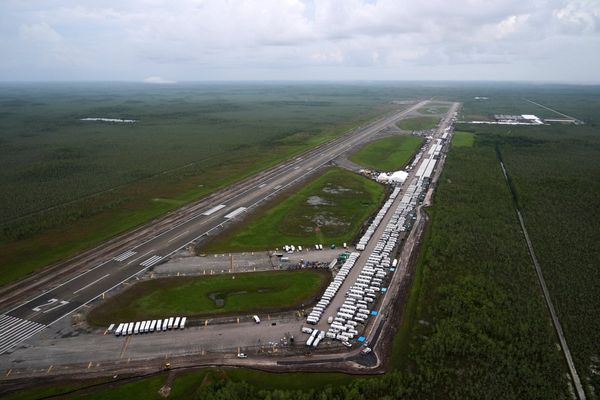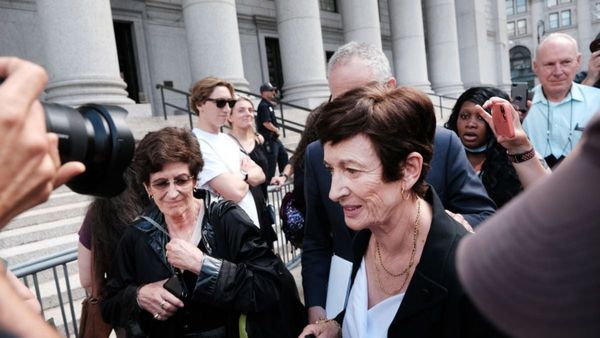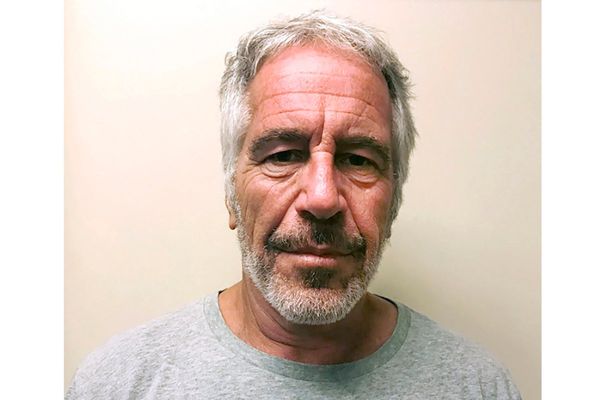When Aboriginal people are released from Tasmania's Risdon Prison, Sara Maynard tries to make sure they get back in touch with their community.
"We'll provide transport, we'll get in touch with community members and say 'hey we've got this event on it'll be great if you come along'," said Ms Maynard, who is the Tasmanian Aboriginal Centre's (TAC) social and emotional wellbeing officer.
The TAC no longer gets government funding to provide legal services to prisoners, but still offers a variety of supports to Aboriginal people who are in custody.
Ms Maynard said when they were released, unfortunately, people usually still had the same problems that caused them to go into prison in the first place, and sometimes they were worse than when they entered custody.
"If you haven't provided them the tools to give them life skills and to give them access to trauma-informed support and services, what do you expect for them to do when they get released from Risdon Prison?" she said.
"Risdon Prison has failed Aboriginal people since time began and nothing has changed. In fact, there's just been more Aboriginal people that have gone into Risdon Prison."
Imprisonment rate continues to grow
New data from the Productivity Commission supports Ms Maynard's comment about the rise.
The number of Aboriginal people in Tasmanian prisons more than doubled over the past decade, according to the latest report on government services.
In 2012-13, there were 73 Aboriginal and Torres Strait Islander people in Tasmanian prisons on an average day, and 399 non-Indigenous people.
By 2021-22, there were 154 Aboriginal prisoners and 479 were non-Indigenous.
That means last financial year, about 24 per cent of Tasmanian prisoners were Aboriginal, compared with 15 per cent 10 years earlier.
About 5.4 per cent of Tasmanian residents identified as Aboriginal in 2021.
Aboriginal Tasmanians were sent to prison at an ever-increasing rate during the same period.
In 2012-13, Aboriginal people were 4.5 times more likely to be imprisoned than non-Indigenous people.
A decade later, they were 6.8 times more likely to be locked up.
Prison costs also rising
The incarceration rate for non-Indigenous Tasmanians also rose over the last decade, though not as rapidly, and there were about 170 extra prisoners in Tasmanian custodial facilities last financial year compared with 2012-13.
The cost of operating Tasmania's prison system roughly doubled over that period, from $57 million a year a decade ago to $101 million last year.
Amnesty International Australia Indigenous rights advisor Rodney Dillon has been working with children in the youth justice system and adult prisoners and their families since the 1990s.
He said the history of oppression endured by Tasmanian Aboriginal people meant they were more likely to experience risk factors, like poverty and intergenerational trauma, which contribute to incarceration.
"Some of this goes back to the Stolen Generation," he said.
"It goes back to poverty, homelessness, there are lots of reasons why people end up in prison and a lot of our families are caught in all those areas and they can't get out of it."
Mr Dillon would like to see Tasmania's approach to imprisoning people reformed and re-imagined.
"I've seen more money put into that system, but the history and statistics show it's getting worse and there are more people going into it.
"I think we need to look at a new way of working with people, you know, what should prison look like, who should be in there and why?
"There are all sorts of things we can do better."
Work underway to reduce rates, minister says
Tasmania's Attorney-General and Minister for Corrections Elise Archer said Tasmania had the lowest gap between rates of Indigenous and non-Indigenous incarceration of any Australian state and territory.
"The issue of over-representation of Aboriginal and Torres Strait Islander people in custody is an extremely complex problem that requires a comprehensive collaborative response from across governments and the community," she said.
"Our government continues to work collaboratively at a national and local level, and participates in initiatives aimed at reducing the over-representation of Aboriginal and Torres Strait Islander people in the criminal justice system."
Ms Archer said the rate of Aboriginal and Torres Strait Islander inmates returning to prison in Tasmania fell in 2021-22 compared to the previous year.
Tasmania's cost of corrective services per head, she said, is lower than the Australian average.
Calls for more prison alternatives
Emeritus Professor of Criminology at the University of Tasmania Rob White said Tasmania's rising incarceration rate for both Aboriginal and non-Indigenous people was unlikely to make the community safer.
"Prison is the most expensive but least effective option in terms of trying to tackle crime," he said.
"We need to put the money where it counts, into the underlying causes of the crime, into the community, into housing, into better education systems."
Fellow University of Tasmania criminologist Dr Michael Guerzoni suggested Tasmania could investigate justice reinvestment programs, in which the causes of crime are identified and measures are put in place to address those problems.
In 2015, the justice reinvestment method was trialled in Bourke in country New South Wales.
"In the Bourke program, it was reported that these initiatives contributed to the reduction in motor vehicle offences by 30 per cent, and reoffending in domestic abuse instances by 37 per cent," Dr Guerzoni said.







